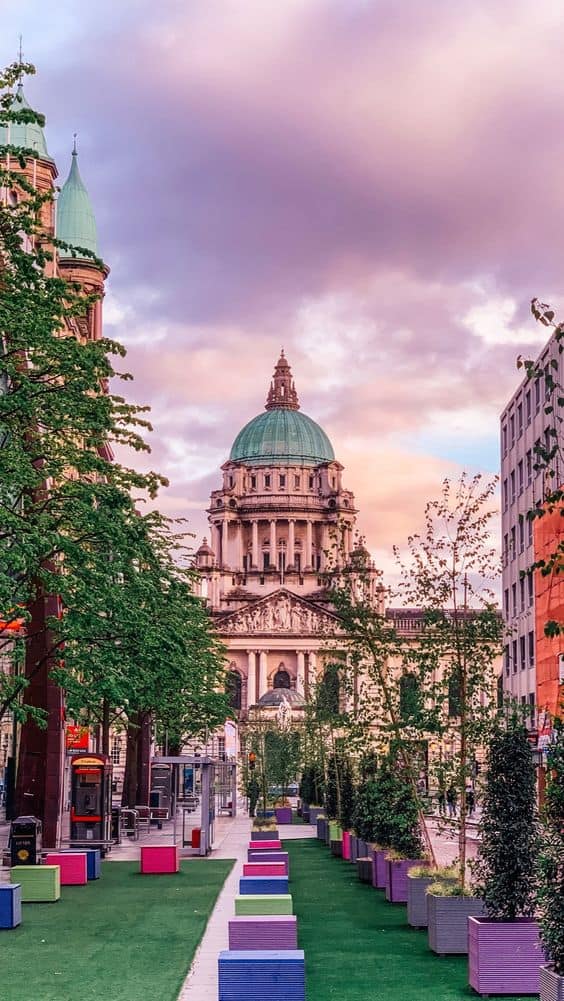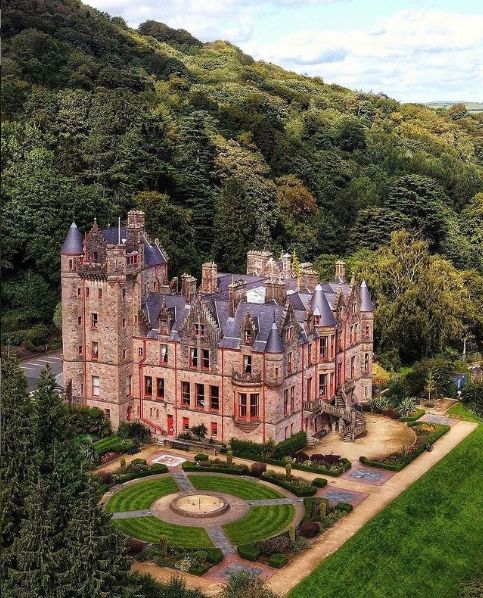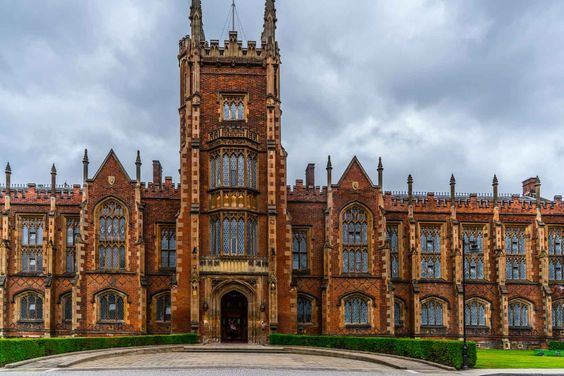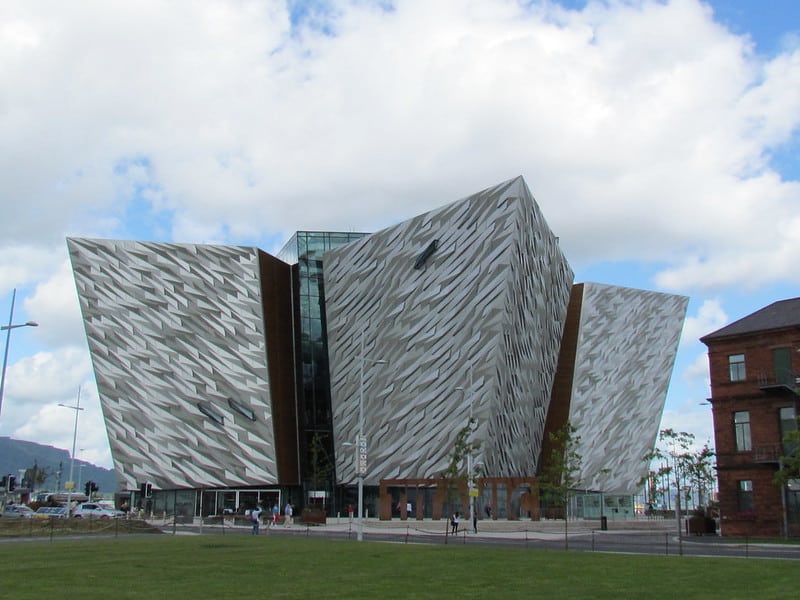If you are looking for things to do in Belfast Northern Ireland, you may want to explore the city’s top landmarks. Check out St. Anne’s Cathedral, the Albert Memorial Clock, the Opera House, and several museums. You may also want to visit the Northern Ireland War Memorial Museum and The Duke of York pub.
Titanic Belfast
The Titanic Belfast Experience is one of the top attractions in the city. This immersive, multimedia experience tells the story of the Titanic and its journey from Belfast to New York. The museum features nine interactive galleries that take visitors through the events surrounding the infamous ocean liner’s voyage. The galleries feature chronological narratives and digital displays to help visitors learn about all aspects of the ship’s life and events.
There is an audiovisual display on the Titanic’s launch, a tour of the reconstructed dry dock and audiovisual displays that give a glimpse into the ship’s journey from a shipyard. There are also authentic tools that the shipbuilders used to build the ship.
You can also tour Belfast’s city hall, which features historic stained-glass windows and an exhibit on the history of the city. The city hall also features a gift shop and cafe. From there, you can stroll through the gardens of the Titanic Memorial. The gardens are colorfully illuminated at night.
Peace Wall
The Peace Wall in Belfast, Northern Ireland is an incredible place to visit. This section of wall was erected during the Troubles to quell the conflict, and today it serves as a treasure trove for art and messages. It is also the site of numerous political rallies, as well as peace and justice events.
The wall is a poignant reminder of the past, while also a symbol of the present. While the conflict is often portrayed as a sectarian issue, it was largely about politics. The conflict was fought over whether Northern Ireland should be a part of the United Kingdom or the Republic of Ireland. It can take generations to change political views.

St. George’s Market
Located on May Street, St George’s Market is the last Victorian covered market in Belfast. It is close to the Waterfront Hall and the River Lagan. It was built in three phases between 1890 and 1896 by the Belfast Corporation. Today, the market is an excellent place to find a wide variety of produce, crafts, and foods.
You can also find plenty of vegetarian, vegan, and gluten-free food stalls at St. George’s Market. There are also plenty of meat options as well. Whether you’re in the mood for traditional fare or something more exotic, you’re sure to find something that suits your palate.
The market is a popular tourist destination in Belfast, and has been in use for centuries. A typical market day sees more than 6,000 people.
SS Nomadic
The SS Nomadic is a historical ship that was launched in Belfast on 25 April 1911. Now it is on display in Belfast’s Titanic Quarter. The ship was built to carry mail and passengers to and from the RMS Olympic and the RMS Titanic. You can visit the ship and learn about its history.
The Nomadic is one of the last White Star Line ships still afloat. It is a relic of Belfast’s maritime heritage and a unique link with the city’s past. It has undergone years of restoration and includes touch screens, info panels, displays, and projections of the Titanic characters.
A trip to the SS Nomadic is included with a ticket to the Titanic Belfast Exhibition. You can visit the ship any day of the week, but the ticket is good for at least a day. Wheelchairs and other visitors with physical disabilities can access the ship’s main levels via a lift, although they won’t be able to access the crew quarters at the bow. Wheelchair users can also use the Metro, which stops nearby.
Belfast Castle
The city of Belfast offers many activities and attractions. For entertainment, you can visit Ulster Hall, one of Ireland’s oldest concert halls. The building has survived two world wars and is a popular destination for live music. The Ulster Orchestra frequently plays at the venue. Other notable venues in Belfast include SSE Arena and Waterfront Hall. The city is also home to several fantastic restaurants. In fact, there are three Michelin star restaurants in Belfast.
For history buffs, you can visit Belfast’s Victorian covered market. The market is one of the city’s last surviving Victorian buildings. Tours include an exhibit outlining the history of the city and a gift shop. The city’s Titanic Memorial Gardens are also located on the grounds of the historic city hall. The grounds are beautiful and colorful at night.
The W5 Interactive Discovery Centre is another popular attraction. This museum features over 250 hands-on exhibits. The museum also offers educational programs and workshops for visitors. Highlights include the famous “Napoleon’s Nose,” which is said to have inspired Jonathan Swift’s novel Gulliver’s Travels. There’s also an on-site restaurant.

Ulster Museum
The Ulster Museum is situated in Belfast’s Botanic Gardens and boasts over 8,000 square meters of public display space. It houses collections of fine art, applied art and archaeology. Visitors can explore the museum’s various exhibits and learn more about the history of Belfast.
The Ulster Museum is free to enter and features excellent collections and exhibitions. This museum is a must-see for any art and history buff. The museum also offers free Wi-Fi, baby-changing facilities, a gift shop, a cloakroom, and is wheelchair accessible. It is located in the Botanic Gardens in south Belfast, about 10 minutes’ walk from the city center.
The Ulster Folklife Museum was first opened in 1965. It displays a range of objects in authentic working conditions and natural surroundings. Traditional buildings were restored and put to use, and rural craftsmen demonstrated their trade in a suitable building. Its aim was to portray life in Ulster at the turn of the twentieth century. The museum seeks to recreate the habitat of the Ulster people and display material culture in an “authentic” manner.

Crumlin Road Gaol
Located in north Belfast, Crumlin Road Gaol was a notorious prison, once known as Europe’s Alcatraz. It was the site of executions, rebellions, and many escape attempts. Until its closure in 1996, Crumlin Road Gaol continued to be a working prison. Today, the historic site features a licensed bar and grill restaurant with local ingredients and seasonal specials. The building was originally built in 1843 and 1845, and is considered one of the most technologically advanced prisons in its day.
You can tour the Crumlin Road Gaol in three different ways. You can tour the prison with a guide, or you can choose a self-guided tour. Both options allow you to view the prison’s history and exhibits. For children under five years old, admission is free. There are also events that take place at Crumlin Road Gaol, including concerts and grand balls.
The Crumlin Road Gaol is the last remaining Victorian-era prison in Northern Ireland. Built by Sir Charles Lanyon, the prison was one of the most technologically advanced in its time. The prison closed in 1996 after 150 years of operation, but today, it is open to the public for tours and events. Visitors can explore the hanging cell, Governor’s office, hospital, and graveyard.
City Hall
The City Hall in Belfast, Northern Ireland, is the civic building of the city council. This Grade A listed building is located in the heart of the city’s business and commercial districts. It is a beautiful example of early 19th century British Gothic architecture. Today, the building is a popular tourist attraction.
Inside, you can enjoy the beautiful stained glass windows of King Edward VII and Queen Alexandria, who were on the throne when Belfast City Hall was built. You can also find a memorial to the Titanic’s victims, who lost their lives during the tragic shipwreck. The monument is located at the northeastern corner of the City Hall grounds.
The City Hall is a popular tourist destination in Belfast. Tours are free, and you can explore the Council Chamber and the gardens. Throughout the year, tours take place three times daily, with additional hours available during the summer months.

